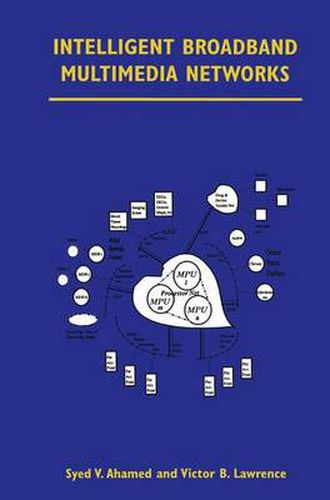Readings Newsletter
Become a Readings Member to make your shopping experience even easier.
Sign in or sign up for free!
You’re not far away from qualifying for FREE standard shipping within Australia
You’ve qualified for FREE standard shipping within Australia
The cart is loading…






This title is printed to order. This book may have been self-published. If so, we cannot guarantee the quality of the content. In the main most books will have gone through the editing process however some may not. We therefore suggest that you be aware of this before ordering this book. If in doubt check either the author or publisher’s details as we are unable to accept any returns unless they are faulty. Please contact us if you have any questions.
A non-mathematical, but highly systems oriented, coverage of modern intelligent information networks, this text focuses on the convergence of computers and communications technologies, and most of the concepts that are generic to all intelligent networks, and their microscopic and macroscopic functions, are presented. It includes specific architectures that can be used by network designers and planners, telecommunications managers, computer scientists, and telecommunications professionals. The breadth of this coverage and the systems orientation of this work make the text suitable for use in advanced level courses on intelligent communications networks. The material ranges from defining intelligent networks to more specific coverage of educational, medical, and knowledge-based networks. Each of the 20 chapters address issues that can help make the transition from computer design, to the underlying concepts of modern telecommunications systems, to considerations necessary for the implementation of intelligent network services. Coverage of emerging technologies, such as HDSL, ADSL, BISDN, wireless, broadband access, ATM, and other topics, are given expanded treatment. The authors have included design methodologies for installing intelligence into almost any communications systems, and procedures for using such intelligence according to the type of function expected from these networks.
$9.00 standard shipping within Australia
FREE standard shipping within Australia for orders over $100.00
Express & International shipping calculated at checkout
This title is printed to order. This book may have been self-published. If so, we cannot guarantee the quality of the content. In the main most books will have gone through the editing process however some may not. We therefore suggest that you be aware of this before ordering this book. If in doubt check either the author or publisher’s details as we are unable to accept any returns unless they are faulty. Please contact us if you have any questions.
A non-mathematical, but highly systems oriented, coverage of modern intelligent information networks, this text focuses on the convergence of computers and communications technologies, and most of the concepts that are generic to all intelligent networks, and their microscopic and macroscopic functions, are presented. It includes specific architectures that can be used by network designers and planners, telecommunications managers, computer scientists, and telecommunications professionals. The breadth of this coverage and the systems orientation of this work make the text suitable for use in advanced level courses on intelligent communications networks. The material ranges from defining intelligent networks to more specific coverage of educational, medical, and knowledge-based networks. Each of the 20 chapters address issues that can help make the transition from computer design, to the underlying concepts of modern telecommunications systems, to considerations necessary for the implementation of intelligent network services. Coverage of emerging technologies, such as HDSL, ADSL, BISDN, wireless, broadband access, ATM, and other topics, are given expanded treatment. The authors have included design methodologies for installing intelligence into almost any communications systems, and procedures for using such intelligence according to the type of function expected from these networks.